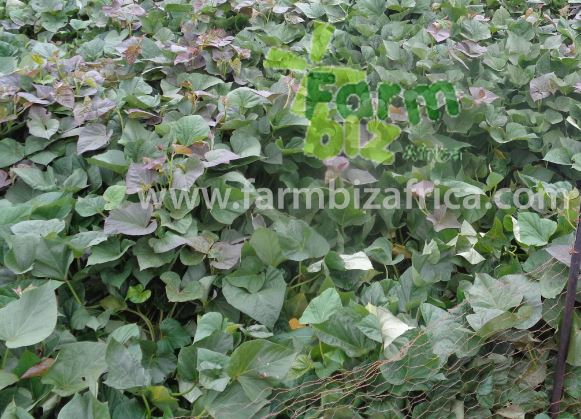Farmers in North Rift Valley have been advised to grow other food crops such as sweet potatoes to enhance food security in the region. Smallholder farmers in the area incurred huge losses this year due to fall army worm infestation and maize lethal necrosis diseases which greatly hampered maize production, a staple food crop in the region.
With the introduction of tested sweet potato varieties suitable for the region, farmers can produce between 6 and 20 tons of sweet potatoes depending on the variety planted and earn between about 2200 per 98 kg of bag, twice in a year as compared to maize which earn about 3,000 per 90 kg bag once in a year. The crop can also supplement maize as an important source of food in the area.
In lower altitude areas like Arror and Ortum, farmers of Elgeyo Marakwet & West Pokot Counties can grow KSP20 and Sandak varieties which do well when planted as a single crop according to the Kenya Agricultural and Livestock Research Organization scientists.
Related article: Irrigation helping Kirinyaga farmers boost their Sweet potato production
In medium altitude areas like Kitale where sweet potato is intercropped with maize, Sandak variety is recommended. KSP20 also does well as a mono-crop in this region. Kembl0 and KSP20 produce the best vines, especially when farmers look after the crop well.
How to plant
For sole cropping, prepare the land immediately after the first rains. For intercropping with maize, prepare the land after harvesting beans. Use a jembe to loosen the soil to at least six inches deep and remove all the weeds. Avoid stony soils because they limit tuber expansion.
In drier areas, plant when the top 6 inches of soil is wet. In high rainfall areas like Kitale you can plant when the top 3 inches is wet. Cut the vines into 1-2 feet 2 pieces and bury 2/3 in the wet soil. The leaves should point upwards. You can plant the vines on the flat ground at 2-3 ft by 1-2 ft spacing or on ridges or mounds of soil at 2-4 ft by 1-2 ft. The mounds or ridges should be between 6 to 18' high. Spacing is not very critical as far as yield is concerned.
Related article: Farmer helping others get clean high yielding sweet potatoes
Weeding
Keep the land free from weeds until the crop covers the ground. The first weeding should be done 3 weeks after planting. Remove occasional weeds by hand after the crop covers the ground.
Fertilizers
Very few farmers apply fertilizers on sweet potato. If the soil is very poor, apply 40 to 200 'debes' per acre of farmyard manure or 1/2 bag of DAR If your major interest is vine production, apply 1/2 bag of DAP per acre.
Pests
The most important pest of the crop is the sweet potato weevil. Plant sweet potato only on land where the crop has not been grown in the past 2 years. Earth up the soil around 3 the crop every 4 to 6 weeks in order to control weevil build up.
Harvesting
You can harvest KSP20 and Sandak varieties after 31/2 months in the Iow, hot areas like Arror and Sigor and after 4 months in the cooler higher areas like Kitale. You can harvest the tubers at once or you can leave some in the ground for up to 4 months until you need them. Locate the large tubers by cracks in the ground. Loosen the soil around the tuber with a sharp tool like a fork and lift the tuber from the ground. Use a jembe if you want to harvest the whole plot at once.
Yield
KSP20 and Sandak can produce 6 to 20 t per acre (18,000 - 60,000 tubers). Kembl 0 can produce 6 to 15 t of tubers and 12 to 20 t of vines per acre. Farmers in Arror, Sigor and Kitale areas found that for every shilling spent on labour to plant, weed, earth up and harvest, they could get 7 to 13 shillings profit (1997 prices).
Feeding vines to livestock
Sweet potato vines are a good dairy animal feed supplement because they have a high protein content (10 to 15%) and are easily digestable. Chop the vines in small pieces and mix them with Napier grass or maize stover. The mixture should have between 20 to 50% sweet potato vines.
Related article: Promising sweet potato varieties in Western Kenya
Market
Farmers in North Rift Valley can sell their sweet potatoes in Eldoret town for Ksh 2200 per 98 kg bag, 3500 in Nairobi, 2,300 in Nakuru and 4,410 in Malindi at current market prices according to soko+, digital commodity trading and information system, linking small scale farmers to end retailers/bulk purchasers of produce.

















Comments powered by CComment